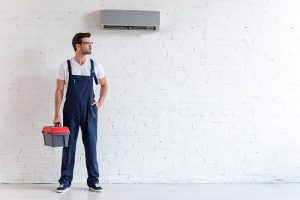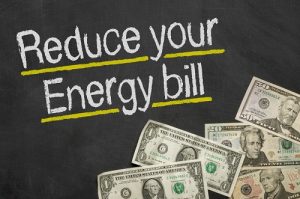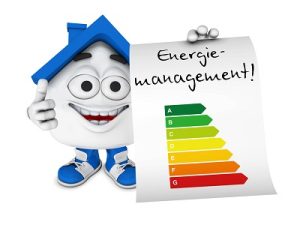 To improve energy efficiency this summer and save money, you can take a small but important step by ensuring that your thermostat settings are set for maximum comfort and efficiency. By assessing the efficiency of your air conditioning system and cleaning or replacing air filters, you can improve system performance.
To improve energy efficiency this summer and save money, you can take a small but important step by ensuring that your thermostat settings are set for maximum comfort and efficiency. By assessing the efficiency of your air conditioning system and cleaning or replacing air filters, you can improve system performance.
Summer is here, and you may already be enjoying the balmy nights and warm days we have been experiencing. The warmer weather brings with it a lot of fun at the beach, but also a greater need to keep cool. This is especially true during the hottest hours of the day. This month we researched how to maximize your thermostat settings so that you can stay cool in summer without burning through your wallet.
What are the optimal thermostat settings?
The climate in your state will determine the optimal AC setting. For example, the recommended AC settings for South Carolina may be different than the AC settings in northern states where many of you are from. It is generally recommended to keep the temperature difference between indoors and outdoors small. The lower your cooling costs will be, the smaller the temperature difference between indoors and outdoors.
A general tip to reduce your energy bills is to keep the house warm when you’re not at home. Set your thermostat to a lower temperature when you arrive home to cool down. When you’re home, the U.S. Department of Energy suggests setting your thermostat to 78 degrees. However, they do mention that it depends on where you live as well as how comfortable you feel in this temperature. Each house and individual is different!
The Department of Energy recommends that you do not set your thermostat to a lower temperature than usual when you turn on the AC. The AC will not cool down your home any faster if you set the temperature lower. This can be an unnecessary expense. Instead, turn on the fan!
Be a fan of fans!
 You can save a lot of cash by using your ceiling fan in conjunction with an air conditioner. Fans do not cool a room, but only the people inside. Your fan will disrupt the layer of stagnant air surrounding your body. This layer of stagnant air prevents heat from escaping. It is similar to being covered by a blanket. Fans disrupt the layer of stagnant air and create airflow in the room, which allows your body to release heat faster. You will feel cooler even without lowering the AC temperatures. Save energy by using the fan.
You can save a lot of cash by using your ceiling fan in conjunction with an air conditioner. Fans do not cool a room, but only the people inside. Your fan will disrupt the layer of stagnant air surrounding your body. This layer of stagnant air prevents heat from escaping. It is similar to being covered by a blanket. Fans disrupt the layer of stagnant air and create airflow in the room, which allows your body to release heat faster. You will feel cooler even without lowering the AC temperatures. Save energy by using the fan.
Remember that the fan will not save you energy. Instead, it is better to increase your thermostat. The fan compensates for higher AC temperatures.
Increase your thermostat while keeping the fan running. You’ll use more energy if you turn on the fan while keeping your thermostat set at the same temperature. According to the US Department of Energy a ceiling fan allows you to increase your AC by 2-4 degrees and still feel cool.
Quick Home Adjustments
Close your blinds throughout the day. Close your blinds during the day to reflect heat that is radiated through the windows. It is especially important to do this during the day when the sun’s rays are directly shining on your home.
- Close all windows and doors when using AC.
If possible, change your AC filter every month during the summer months! Dirt and debris on your AC filter will make your AC system work more to cool your home. You can save money by changing your AC filters regularly. Your system will be more efficient and last longer.
- When you leave the room, turn off all lights. Leaving lights on can warm up the room.
- It’s best to leave interior doors open if you have central air conditioning.
Preventative Maintenance
 Knowing how to choose an ideal HVAC expert is important because not all of them are the same. Doing your research could reveal the distinction between obtaining a strong, skilled air conditioner expert and getting scammed. In some places, people pretend to be experts when they are just simple handymen with trucks and a label.
Knowing how to choose an ideal HVAC expert is important because not all of them are the same. Doing your research could reveal the distinction between obtaining a strong, skilled air conditioner expert and getting scammed. In some places, people pretend to be experts when they are just simple handymen with trucks and a label.

 Keeping your
Keeping your  Hotter days are here and as much as you enjoy fresh air coming in through your home windows, it is also time to get your yearly service. Have you ever thought about what is required to run your
Hotter days are here and as much as you enjoy fresh air coming in through your home windows, it is also time to get your yearly service. Have you ever thought about what is required to run your  Regular
Regular 
 Humidity makes the heat even more unbearable for almost anyone, especially lately in North Myrtle Beach . That’s just one of the ways humidity affects people. In a nutshell, high humidity is the least bit comfortable for use outdoors and indoors. The same goes for your
Humidity makes the heat even more unbearable for almost anyone, especially lately in North Myrtle Beach . That’s just one of the ways humidity affects people. In a nutshell, high humidity is the least bit comfortable for use outdoors and indoors. The same goes for your  The humid summer season in
The humid summer season in  To improve energy efficiency this summer and save money, you can take a small but important step by ensuring that your thermostat settings are set for maximum comfort and efficiency. By assessing the
To improve energy efficiency this summer and save money, you can take a small but important step by ensuring that your thermostat settings are set for maximum comfort and efficiency. By assessing the  You can save a lot of cash by using your ceiling fan in conjunction with an air conditioner. Fans do not cool a room, but only the people inside. Your fan will disrupt the layer of stagnant air surrounding your body. This layer of stagnant air prevents heat from escaping. It is similar to being covered by a blanket. Fans disrupt the layer of stagnant air and create airflow in the room, which allows your body to release heat faster. You will feel cooler even without lowering the AC temperatures. Save energy by using the fan.
You can save a lot of cash by using your ceiling fan in conjunction with an air conditioner. Fans do not cool a room, but only the people inside. Your fan will disrupt the layer of stagnant air surrounding your body. This layer of stagnant air prevents heat from escaping. It is similar to being covered by a blanket. Fans disrupt the layer of stagnant air and create airflow in the room, which allows your body to release heat faster. You will feel cooler even without lowering the AC temperatures. Save energy by using the fan. Each type of
Each type of  It is not unusual for South Carolina to experience thunderstorms all summer, even on hot and humid days. Often they can be serious, with strong winds that can severely damage power lines. When that occurs, you can unexpectedly discover yourself in total darkness, even worse, without an
It is not unusual for South Carolina to experience thunderstorms all summer, even on hot and humid days. Often they can be serious, with strong winds that can severely damage power lines. When that occurs, you can unexpectedly discover yourself in total darkness, even worse, without an  If your air conditioner is not working properly, you must hire a technician you can trust to fix it. You could end up paying for substandard work or overpaying for a simple task if you don’t do any research about your technician. These 12 things you should consider when choosing an
If your air conditioner is not working properly, you must hire a technician you can trust to fix it. You could end up paying for substandard work or overpaying for a simple task if you don’t do any research about your technician. These 12 things you should consider when choosing an